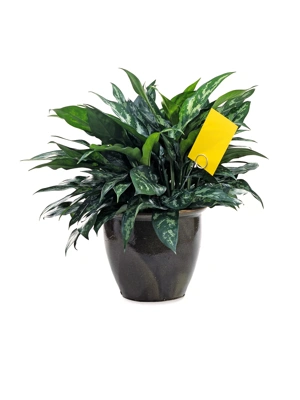How to control fungus gnats

These tiny flies can be a nuisance — especially if you have houseplants. They can also affect seedlings. The flies resemble tiny mosquitoes or fruit flies but do not sting. Their small white larvae feed in the soil on organic matter, fungi, and plant roots. If numerous, the larvae can cause stunting and dieback of plants and make the roots vulnerable to disease.
Fungus gnats are attracted to wet soils that are high in organic matter; they lay their eggs on the soil surface. They are weak fliers and usually stay close to plants. There can be multiple generations each year and they occur throughout North America.
Techniques for control
- Let the soil in plant containers dry out for several days. The larvae live in the top few inches of the soil, so when that becomes dry, they will die. After that, make a habit of letting your potted plants dry out a bit between waterings.
- Treat the soil with beneficial nematodes; details below.
- Remove any dead leaves or other organic matter from the soil surface and from around the base of the pot.
- If fungus gnat problems recur, consider repotting the plant. Remove as much of the infested soil from around the roots as feasible, and start fresh with a well-drained growing medium.
- To prevent problems, cover the soil surface with a layer of sand or diatomaceous earth.
- Place yellow sticky traps above the soil to trap adult flies.

Last updated: 03/14/2024
Print this Article:
Related items
Get the Dirt
Stay up to date on new articles and advice. Please fill out the information below.



